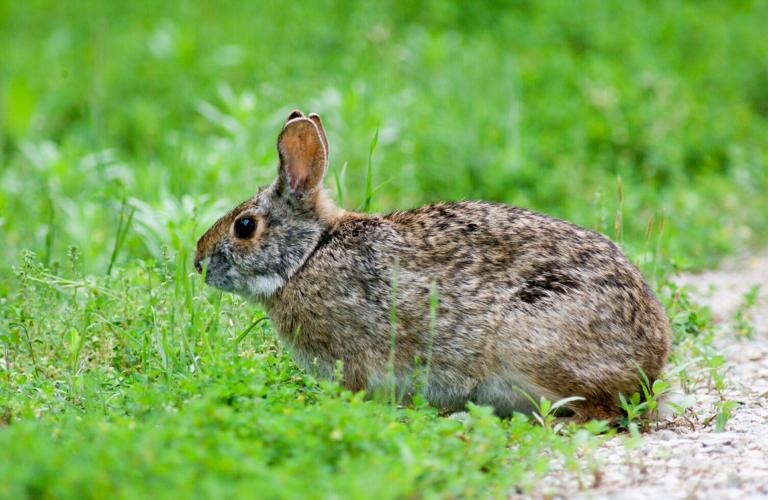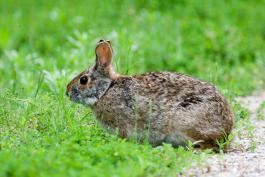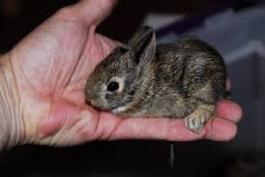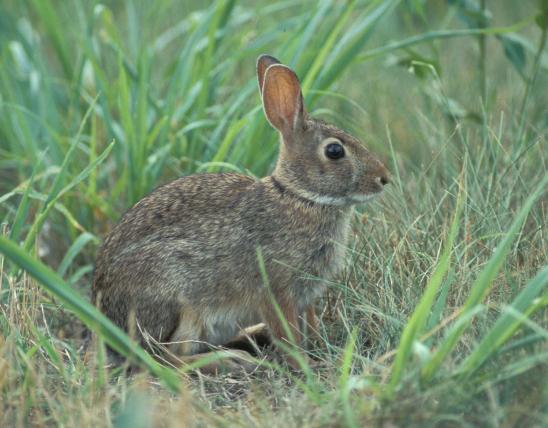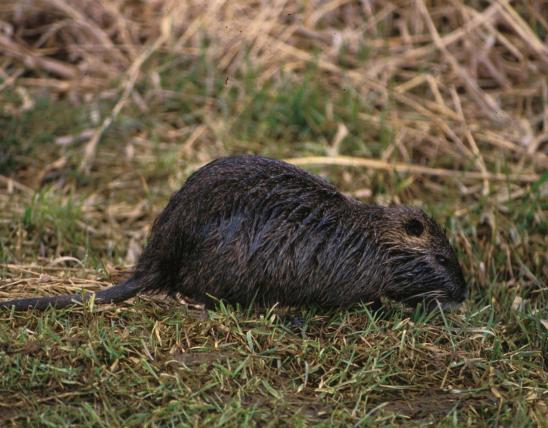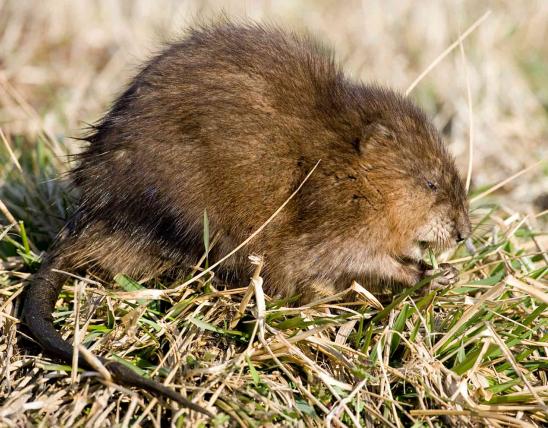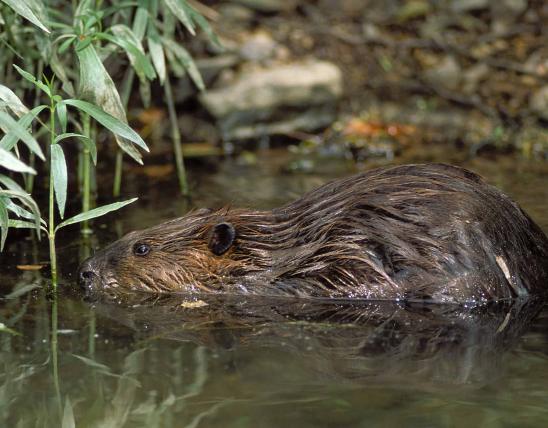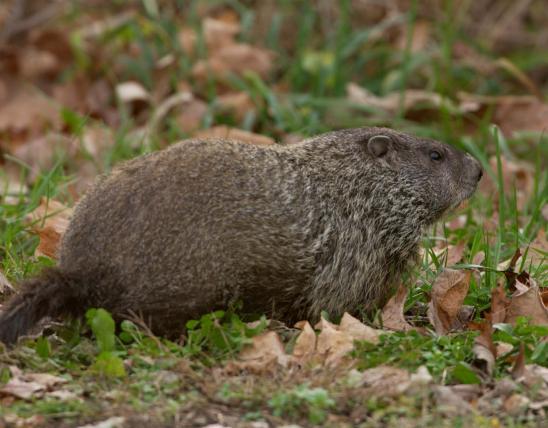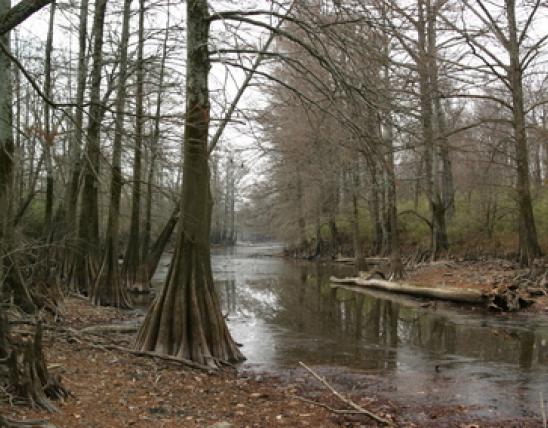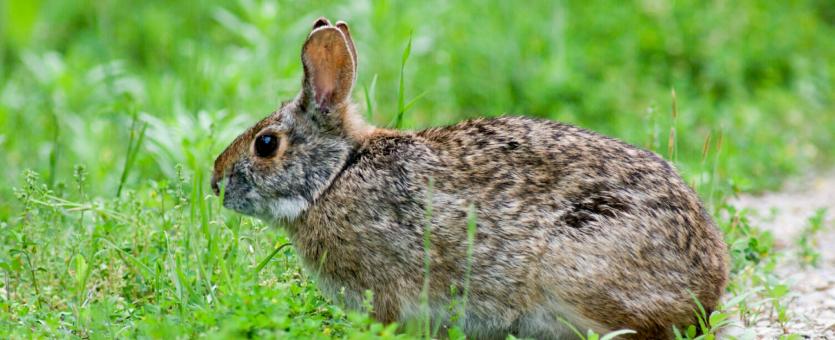
The swamp rabbit is similar to the eastern cottontail but has a generally larger size, proportionately shorter and rounder ears, coarser body fur with a yellowish cast (particularly to the rump), and more black mottling. The tops of the hind feet are reddish brown. The overall color is dark grayish or yellowish brown above, with coarse black peppering or mottling. The underparts are white except for the chest, which is buffy gray. The back of the neck is slightly rusty.
Total length: 16–22 inches; tail length: 1½–3 inches; weight: 2½–6 pounds.
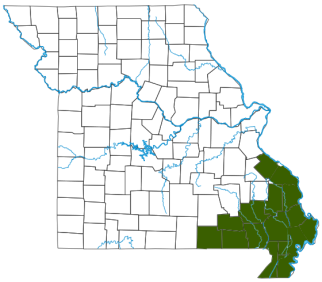
Mississippi Lowlands of southeast Missouri.
Habitat and Conservation
Swamp rabbits live in wet lowlands and along the banks of streams and drainage ditches. When pursued, the swamp rabbit usually enters the water, swimming and diving well, and often comes up under roots or other overhanging protection. Swamp rabbits have resting forms on logs, stones, or other vegetation-covered elevations projecting out of the water. They usually leave droppings on logs and stumps.
Food
Swamp rabbits eat many species of grasses, sedges, and herbs growing in moist localities, plus succulent aquatic plants and the stems of cane. One species of sedge, Carex lupulina, is preferred by the swamp rabbits in southeast Missouri. In winter, they feed on twigs and bark of woody plants such as blackberry, hazelnut, deciduous holly, and spicebush.
Status
A Species of Conservation Concern in Missouri. Its numbers have been declining due to loss of appropriate swamp habitat. Because most of our state’s southeast lowland hardwood forests and swamps have been drained and converted to row crops, the swamp rabbit will probably be confined to publicly owned and managed lands or privately owned sites where commercial timber is managed in large acreages and wetland habitat retained.
Life Cycle
Swamp rabbits breed from February through mid-July, but breeding can extend into August and September. The gestation period ranges from 35 to 40 days, and up to 5 litters are produced annually. There are usually 3–4 young per litter. The young leave the nest in their second week but continue to nurse a while longer.
Human Connections
The swamp rabbit is a popular game animal in Missouri’s Bootheel region, but because of its limited range and declining numbers, it is less important than the cottontail as a game species in our state. Special restrictions apply to the bag limit for this imperiled species.
Ecosystem Connections
As with the eastern cottontail, many wild carnivores feed on swamp rabbits, which takes the predation pressure off of other game species and livestock. Herbivores convert plant matter into meat and thus form an important link in the food chain.
